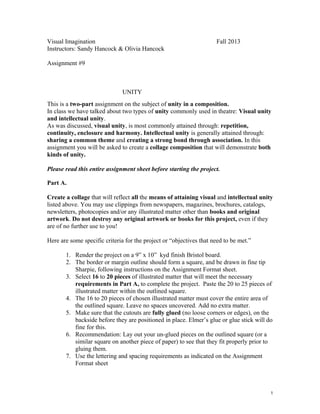This document provides instructions for a two-part assignment on unity in composition for a visual imagination class. Students are asked to create a collage (Part A) that demonstrates visual and intellectual unity through techniques like repetition, continuity, enclosure, harmony, and common themes. Specific criteria are outlined for the collage, including size, layout, number of cutouts used, and labeling. Students must also submit a rationale (Part B) explaining how their collage achieves visual and intellectual unity in under one page. The assignment is due according to the date in the class syllabus.

